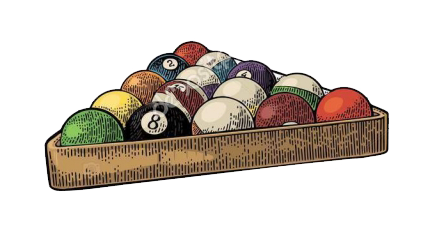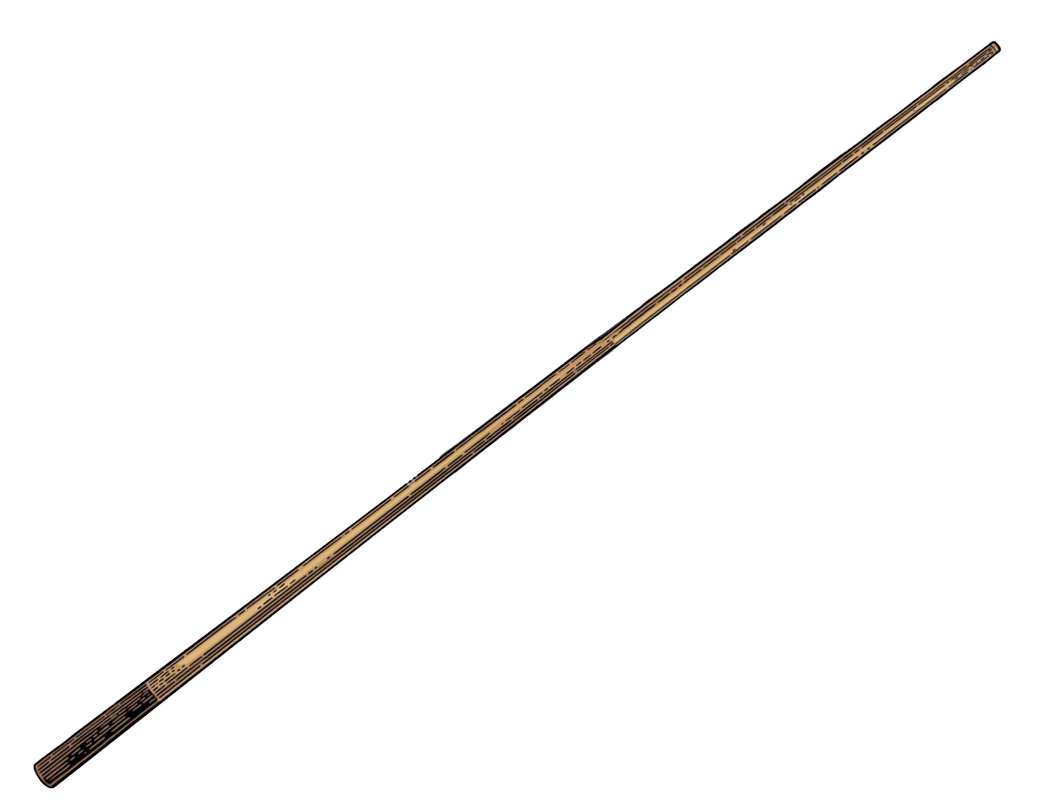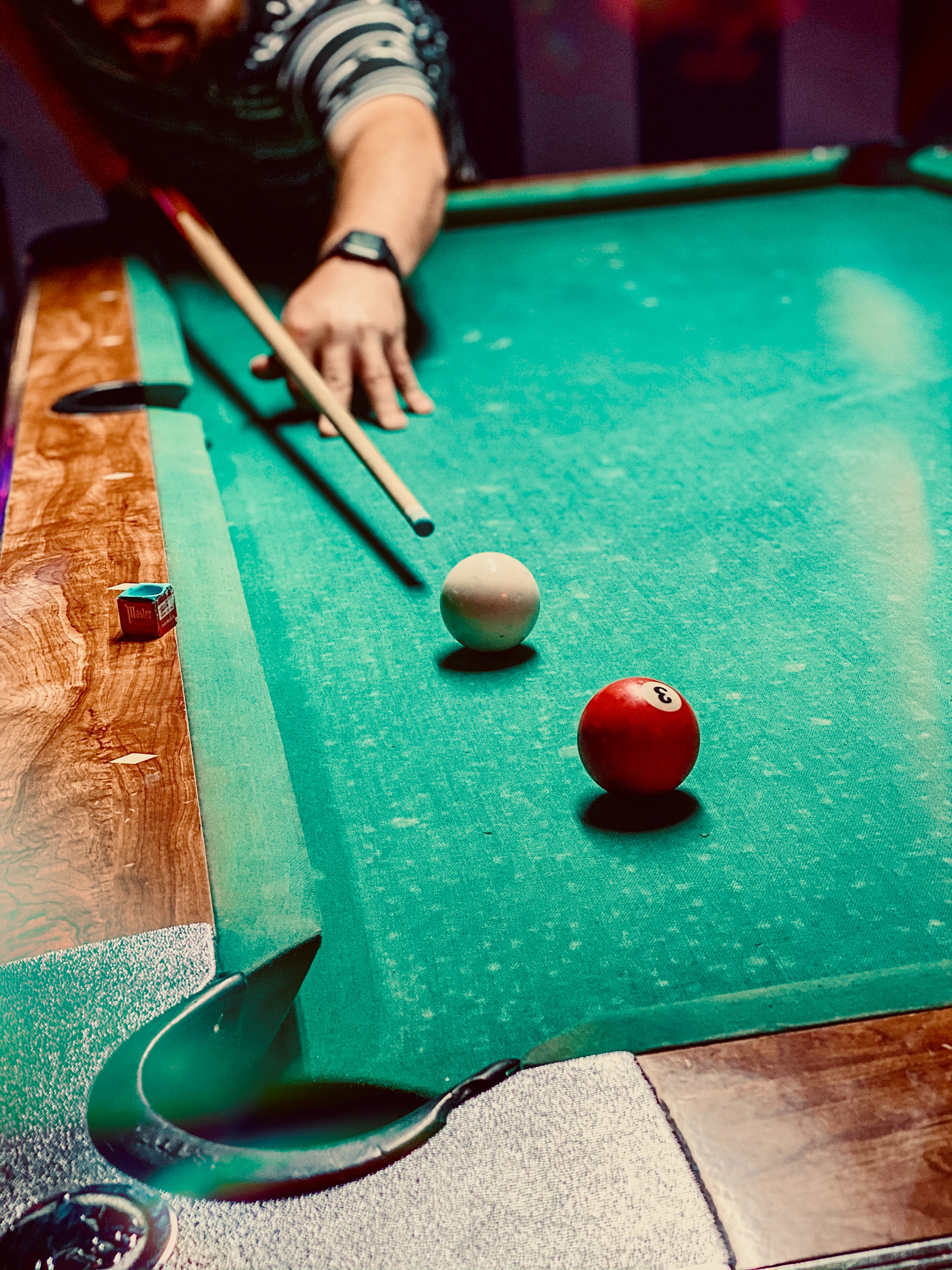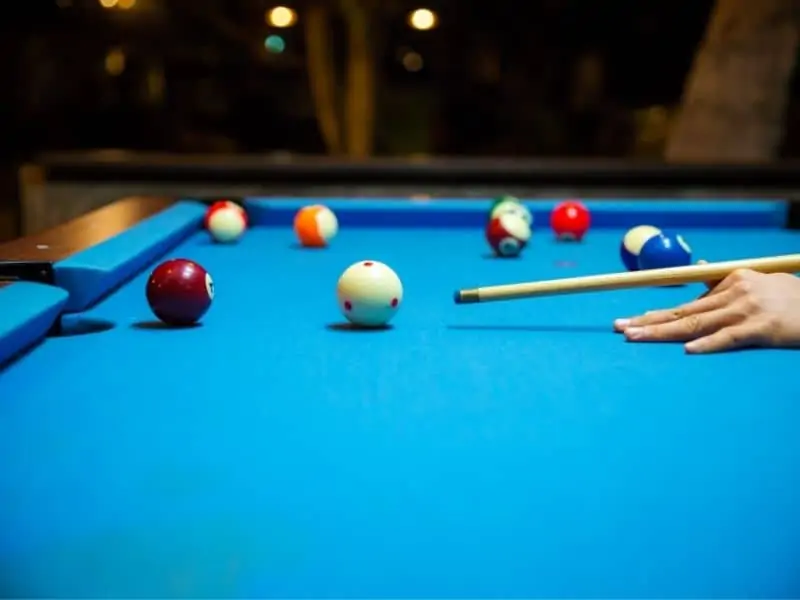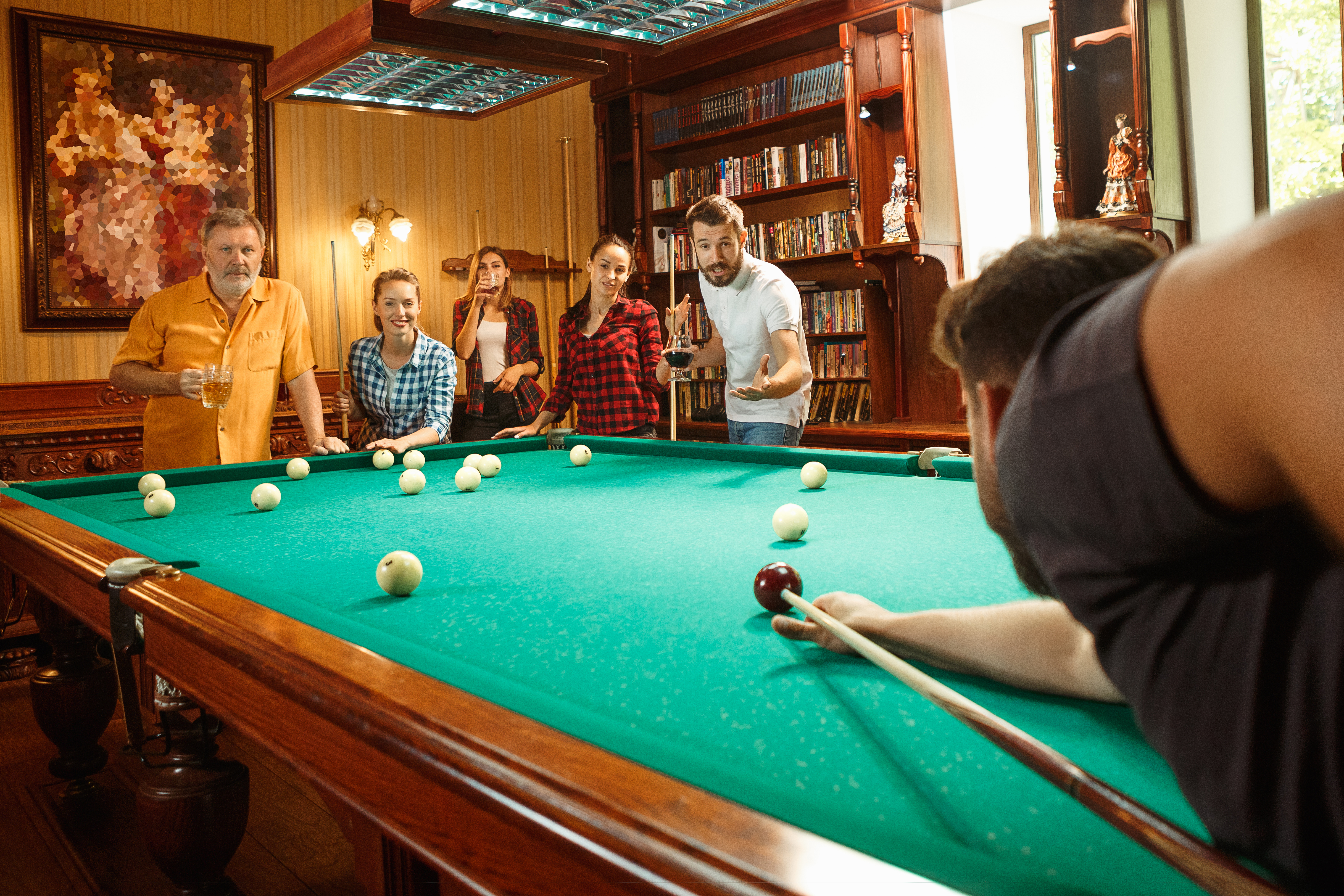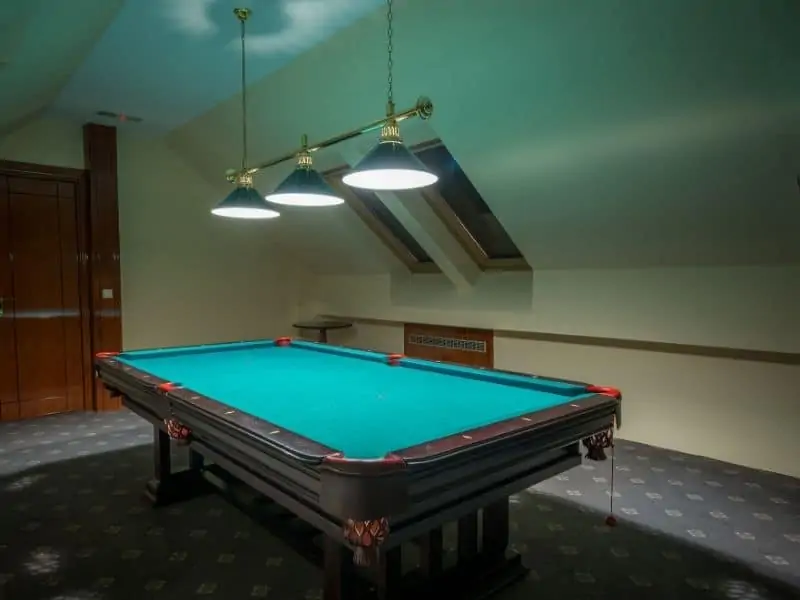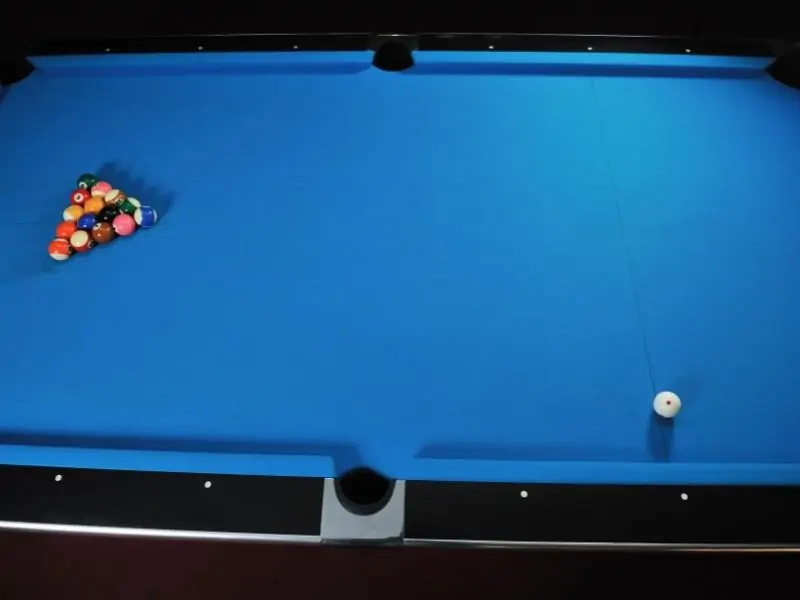Pool is a game loved and enjoyed by millions of people around the world. It usually consists of two players pitted against each other in a fierce battle to be the first one to legally pocket the 8-ball, or 9-ball, or whatever ball the particular game you’re playing requires you to pocket in order to win.
But pool doesn’t have to be played with just two people. In fact, there are some pool games that are great for three players including Cut Throat, Rotation, and Kelly Pool. You can even modify traditional pool games such as 8-ball and 9-ball to accommodate three players.
If you’re headed to the pool hall and need some ideas for 3 player pool games then this article should definitely help you out. I’m going to share with you some awesome 3 player pool games that I know you’ll enjoy.
Cut Throat Pool: A Thrilling 3-Player Game
Cut Throat Pool is an elimination-style game that makes use of 15 object balls and the cue ball. It’s an engaging game played with 3-5 participants.
Number of Players
- 3-5 Players: The game can be enjoyed with a minimum of three and up to five players.
Objective of Cut Throat Pool
The primary goal of Cut Throat Pool is to pocket your opponents’ balls while keeping yours on the table. The last person left with any balls remaining on the table wins the game.
Gameplay Instructions
Assigning Ball Groups
- 3 Players: One person will have balls 1-5, the next will have 6-10, and the last will have balls 11-15.
- More than 3 Players: Divide the balls equally among the number of players you have.
- Deciding Ball Groups: The simplest way is to decide before the game begins.
Deciding the Shooting Order
Choose the order by rock-paper-scissors, flipping a coin, or any other preferred method.
The Main Game
Once the balls have been decided upon, each player attempts to pocket opponents’ balls, not his own. The last person with any balls left on the table wins the game.
Racking
To rack Cut Throat, place the racking triangle at the foot spot of the table. The number 1-ball is at the top of the triangle, with the number 6-ball and 11-ball in the bottom corners. All other balls are placed randomly.
Opening Shot
If the shooter pockets any balls on the break, including his own, he continues to shoot. Each player’s turn continues until he misses, scratches, jumps a ball off the table, or fouls.
Fouls in Cut Throat Pool
- General Rule: All fouls result in one of each player’s balls being placed back on the table.
- Rejoining the Game: If you’ve been eliminated and a remaining player fouls, one of your balls is put back on the table, and you rejoin the game.
- Contact Rule: You must hit an opponent’s ball first. If you hit one of your balls first, it’s a foul.
- Jumping Balls: If you jump an opponent’s ball off the table, it’s a foul. If you jump your own off the table, it’s not a foul.
- Remember: You’re shooting at your opponents’ balls, not your own. This is opposite traditional pool games like 8-ball and 9-ball.
By following these guidelines, you can enjoy a lively game of Cut Throat Pool with your friends and family.
Rotation Pool
Rotation Pool is an engaging pool game that employs a unique point system, using all 15 object balls and the cue ball. Unlike traditional 8-ball games, the competition revolves around scoring points.
Number of Players
- 2-4 Players: Suitable for two to four players, offering a thrilling and strategic experience.
Objective of Rotation Pool
The game’s primary goal is to score 61 points faster than your opponents or opposing team. While 61 points is standard, the target score can be modified as desired.
Scoring in Rotation Pool
- Point Value: Each ball has a point value equivalent to its number, e.g., the number 1-ball is worth 1 point, and the number 15-ball is worth 15 points.
- Lowest to Highest: The lowest numbered ball must be pocketed first, and higher value balls can be pocketed legally by contacting the lowest valued ball first.
- Scoring: Points are added when a ball is legally pocketed.
Gameplay Instructions
Racking
- Initial Setup: Rack the 15 object balls like 8-ball, with the number 1-ball at the head, the 2-ball in the right rear corner, the 3-ball in the left rear corner, and the 15-ball in the center. The rest of the balls are randomly placed.
Breaking
- Starting the Game: The break must begin by striking the number 1-ball, and side breaks are not permitted.
Shooting Order
- Progression: Players pocket the balls in ascending order, from the lowest to the highest number.
- Turn Continuation: A player keeps shooting until failing to legally pocket a ball, committing a foul, or the game ends.
- Winning: The first to reach 61 points (or a predetermined score) is the winner.
- Illegally Pocketed Balls: These are spotted back on the table.
Fouls in Rotation Pool
A foul ends the current player’s turn, and the next player may either shoot or require the current player to shoot. Here are common fouls:
- Not Striking the Lowest Numbered Ball: First or at all.
- Scratching the Cue Ball: Leads to a foul.
- Jumping the Cue Ball off the Table: Another form of foul.
- Failure to Legally Pocket an Object Ball: Constitutes a foul.
- Knocking an Object Ball off the Table: Also considered a foul.
- Scratches and Jumps: If the opponent scratches or jumps the cue ball, the incoming player can take ball in hand behind the head string or make the current player shoot.
- No Point Penalties: There are no point deductions for fouls, but three consecutive fouls result in a loss.
Rotation Pool offers an exciting twist to conventional pool games, with scoring and strategy at its core. Whether you’re a seasoned player or new to the game, this guide can help you enjoy the fun and challenge of Rotation Pool.
Kelly Pool
Kelly Pool stands out as a unique rotation game where players are secretly assigned a specific ball to pocket in order to win. Unlike conventional pool games, Kelly Pool doesn’t involve racing to the 8-ball or utilizing a point system.
Number of Players
- 2-15 Players: Kelly Pool can be enjoyed by two to fifteen players, adding intrigue and excitement to the game.
Objective of Kelly Pool
The central goal is to pocket your assigned object ball before any other players pocket theirs, creating a suspenseful competition where each player’s target ball remains a secret.
Gameplay in Kelly Pool
Pre-Game Setup
- Choosing a “Pea”: Before the game starts, each player randomly selects a “pea” from a shaker bottle. These peas are numbered 1-15, corresponding to the pool balls in play. Your selected pea becomes the ball you must pocket to win.
- Keeping Secrets: Each player’s number is kept hidden from others.
- Shaker Bottle and Peas: You can of course create your own system for picking a “pea”, or check it out on Amazon.
Racking Kelly Pool
- Placement: The number 1-ball goes in the head position, the 2-ball in the bottom right corner, and the 3-ball in the bottom left corner of the triangle. All other balls are placed randomly.
- Open Break Requirement: At least 4 object balls must contact the rails.
- Post-Break Play: If the breaking shooter pockets any balls, they continue shooting.
- Winning: The game is won when a player pockets their assigned ball.
Fouls in Kelly Pool
As a rotation game, the rules of Kelly Pool mandate pocketing the lowest number ball first. Here are the fouls:
- Contacting the Wrong Ball: It’s a foul to hit a ball other than the lowest numbered ball first. This ends your turn.
- Illegally Pocketing a Ball: If you pocket a ball out of order, it’s spotted back on the table at the foot spot.
- Scratching or Jumping the Cue Ball: The incoming player gets ball in hand behind the head string.
- Continuation Option: If the current player fouls, scratches, or jumps the cue ball off the table, the incoming shooter can play or require the current shooter to continue.
Kelly Pool offers a novel twist on traditional pool games, introducing an element of secrecy and strategy that elevates the excitement. Whether playing with friends or competitors, Kelly Pool ensures a thrilling game experience. Enjoy the challenge!
3-Ball Billiards: A Fast-Paced Skill Game
3-Ball Billiards is a form of pocket billiards that offers a quick and challenging gameplay experience. It can be played by two or more players, technically with no upper limit.
Number of Players
- Technically Unlimited: This game does not rely on turn-taking or a shared rack, making it possible for a limitless number of participants.
Objective of 3-Ball Billiards
The aim of 3-Ball is to pocket the three object balls in the fewest number of strokes. The game is similar to golf; the fewer the strokes, the better your score.
Gameplay Instructions
Ball Selection
- Standard Balls: The game typically uses the 1, 2, and 3 balls, along with the cue ball.
Deciding the Shooting Order
Players can determine the shooting order through various methods, such as flipping a coin or a simple “after you” gesture.
The Main Game
Each player starts with their own rack and attempts to pocket the 1, 2, and 3 balls in ascending order in as few strokes as possible.
Racking
Place the 1-ball at the head spot, with the 2-ball and 3-ball behind it, forming a triangle. Special 3-ball racking triangles are available, but a standard triangle works as well.
Opening Shot
The player breaking doesn’t need to make the balls touch the railings. A soft break is allowed, and often strategic since the same player continues to shoot post-break.
Scoring in 3-Ball Billiards
A player’s score is calculated by adding one point for each stroke taken, including missed shots and fouls. The objective is to have the lowest score at the end of the round.
Fouls in 3-Ball Billiards
- Cue Ball Off Table: Hitting the cue ball off the table is a foul.
- Double Hit: Accidentally touching the cue ball more than once during a shot.
- Push Shots: Using the cue stick to push the ball instead of striking it.
- Illegal Movements: Moving any ball illegally with hands or the cue.
- Illegal Jump Shots: Any jump shots not adhering to the general rules of pocket billiards.
Advanced Scoring Options
With more players, you can set a cut-off score for the maximum number of attempts, usually between 3-5 for experienced players. For tie-breakers, the game continues until one player emerges victorious, regardless of the number of players.
By adhering to these guidelines, 3-Ball offers a quick and skill-testing game that both casual and serious players can enjoy.
In Conclusion
Pool doesn’t have to be restricted to just two players at the table. As you have seen, there are some great games designed to be played with more than two people.
Also, feel free to experiment and create your own billiard games. Or modify some games you already know in order to accommodate an extra person. Pool is meant to be fun for everyone.
Other Articles You May Be Interested In:
- Best Pool Cues for the Money: Discover the top pool cues that offer great value without breaking the bank.
- Pool Table in the Garage? Here’s What You Need to Know: Understand the essential considerations for setting up a pool table in your garage.
- Break Cue vs Playing Cue: What’s the Difference?: Learn the key differences between break cues and playing cues to enhance your game.
- How Much Does a Good Pool Cue Cost?: Explore the factors that determine the cost of a high-quality pool cue.
- Are Mini Pool Tables Worth It? A Complete Guide: Read our comprehensive guide on mini pool tables and decide if they’re the right fit for you.
